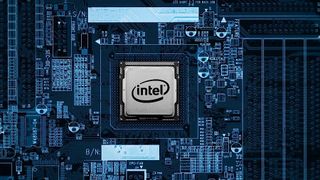Intel boosts data centre power with new Xeon chips
Upgraded Xeon hardware boosts HPC capacity across a number of use cases

Intel has unveiled its second generation of Xeon processors as it looks to cement its leadership in the data centre space.
Offering more cores, increased cache size and boosted processor frequency, the 2nd-gen Intel Xeon scalable chips are the company's fastest and most effective data centre and server hardware to date.
Intel says that the new chips are able to deliver significant advances in terms of pure performance and performance per dollar. The company notes that the new 2nd-Gen Intel Xeon Gold processors deliver an average of 36 percent more performance and 1.42x better performance-per-dollar compared to the 1st-Gen Intel Xeon Gold processors.
- Check out the best Intel processors
- Best small business servers of 2020
- Amazon may be preparing a 32-core ARM chip to rival Intel Xeon and AMD Epyc
Boosted
The new releases include the Intel Xeon Gold 6256 and 6250, two new chips that boast the industry’s highest server processor frequency, delivering a base and turbo frequency up to 3.9 GHz and 4.5 GHz, respectively.
Intel says that such high-frequency processors are ideal for high-scale workloads that regularly refresh, such as financial trading, simulation & modeling, HPC and databases.
The company says that more mainstream use cases will also be able to benefit from its new releases, with a range of scalable, value-driven offerings that can also power edge, networking and IoT usage.
“Intel’s data centric platforms offer the broadest market coverage of any server processor platform – from cloud, through the network, to the intelligent edge,” said Lisa Spelman, corporate vice president and general manager of the Xeon and Memory Group within Intel’s Data Platforms Group.
Are you a pro? Subscribe to our newsletter
Sign up to the TechRadar Pro newsletter to get all the top news, opinion, features and guidance your business needs to succeed!
“Working closely with our customers, we are delivering these new server processors to address their performance and pricing needs across a broad range of markets and workloads.”
The new chips are available now, with Intel says that a wide range of systems will be available through OEMS and ODMs over the coming weeks.
- Best workstations of 2020: top powerful PCs for professionals

Mike Moore is Deputy Editor at TechRadar Pro. He has worked as a B2B and B2C tech journalist for nearly a decade, including at one of the UK's leading national newspapers and fellow Future title ITProPortal, and when he's not keeping track of all the latest enterprise and workplace trends, can most likely be found watching, following or taking part in some kind of sport.
Most Popular

